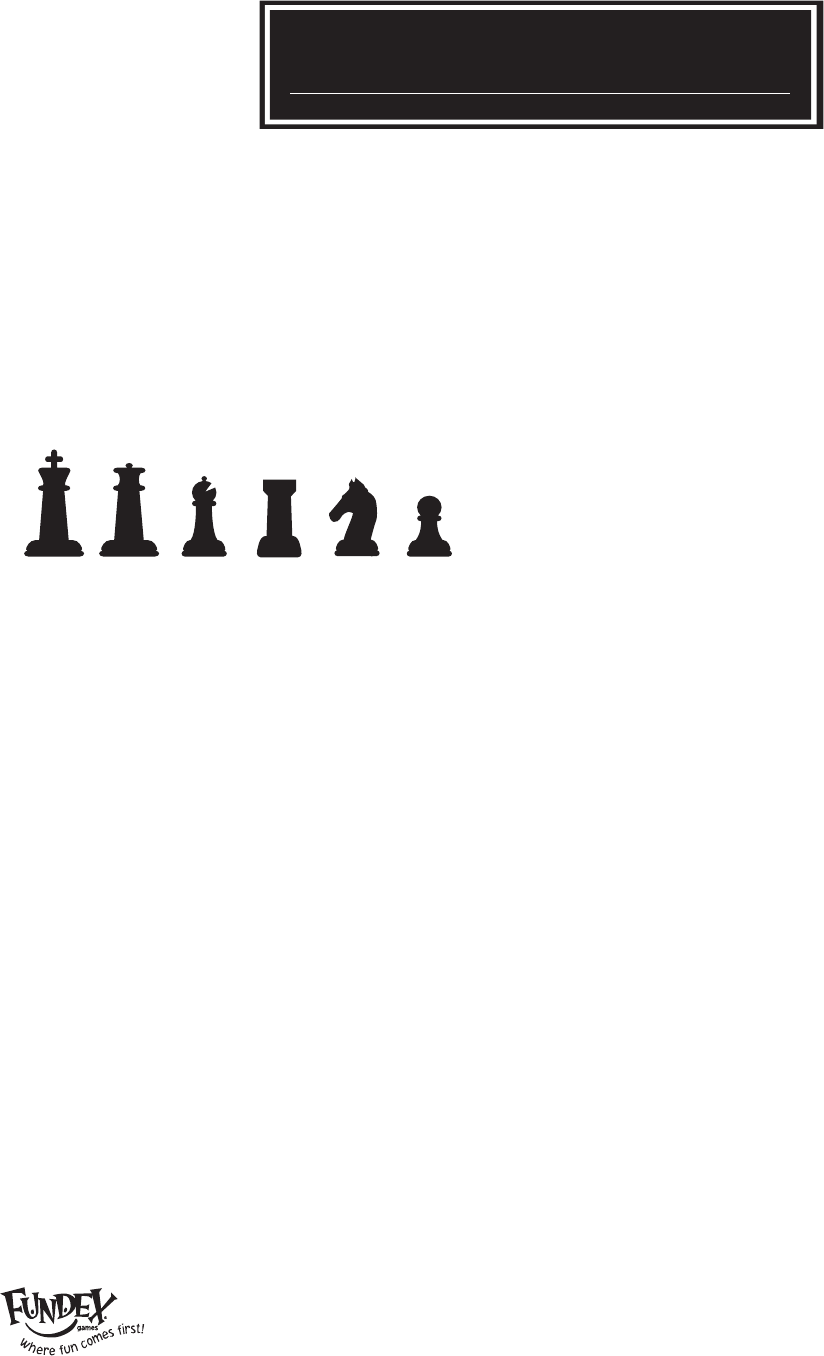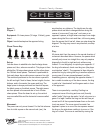
INSTRUCTIONS
Classic Family Games
PREMIUM WOOD CABINET
CHESS
Ages: 8+
Players: 2
Equipment:
32 chess pieces (16 beige, 16 black), game
board
Object: Immobilize/capture the opponent’s king
Chess Pieces Key:
King Queen Bishop Rook Knight Pawn
Set-up:
Lots are drawn to establish who has the beige chess
pieces and, thus, who can move first. This player is then
allotted the 16 beige chess pieces and the other player,
the 16 black chess pieces. The board is positioned so
that each player has a white corner square on his right.
The rooks are positioned on the two corner squares to
the left and right. Next to these, the two knights, the two
bishops, and in the center, the queen and king. The
beige queen is always positioned on the white square,
the black queen on the black square. The eight pawns
are then placed in the second row in front of these
chess pieces. When the board is set up, the vertical
rows are called files and the horizontal rows are called
ranks.
Movement:
The pawns can only move forward. For the first advance
from its initial square on the second rank (row), the
any direction, any distance. The knights are the only
pieces which are able to change direction during the
course of a move and “jump over” one’s own or an
opponent’s pieces; a knight takes one step of one single
square along the file or rank and then, still moving away
from the square that it has left, takes one step along the
diagonal. The king may move in any direction, one step
at a time.
Play:
All pieces start from the pawns in the normal direction of
movement described above. However, the pawns which
normally only move in a straight line, may only capture
diagonally to the left or right and only while moving
forward. It is not obligatory to capture your opponent. If
the king is threatened, check must be given (the player
must declare “check”). The opponent is then obliged to
protect his king by moving the king to another square or
moving one of his own pieces between it and the
threatening piece or capturing the opposite attacker. If
he is unable to make any of the above moves, the king
is said to be “checkmated” and the game ends in favor
of the opponent.
There is one peculiarity—castling. Castling is a
compound move of the king and one rook (formally
called “castle”) that may be made, if at all, only once in a
game. It is legal if neither the king nor the rook has yet
moved and if all the squares between them on the rank
(row) are vacant. The move cannot be made if an
opponent‘s piece is on one of the two squares nearest
the king on the side where castling is to occur or if the
king is in check. The move is executed by moving the
ITEM NO. 5710
©2005 Fundex Games, Ltd. • P.O. Box 421309 • Indianapolis, IN 46242
MADE IN CHINA
Questions or comments? Write to us at the address above, call 1.800.486.9787
or email customerservice@fundexgames.com • www.fundexgames.com



